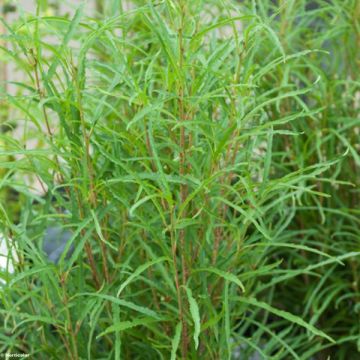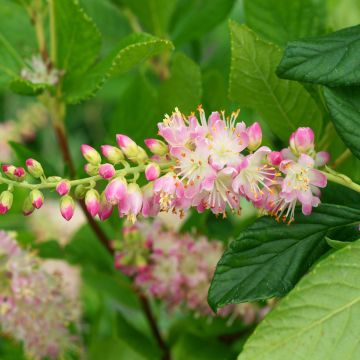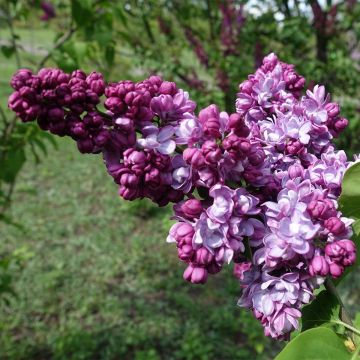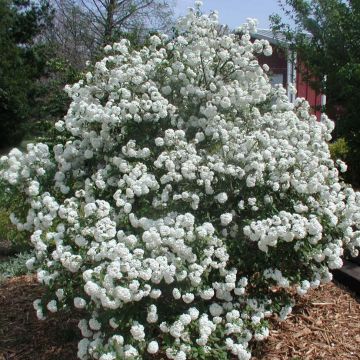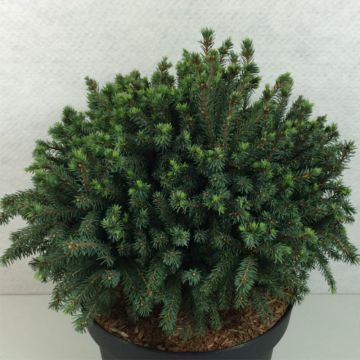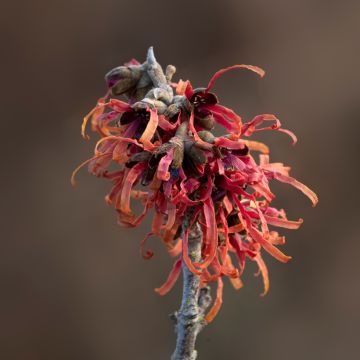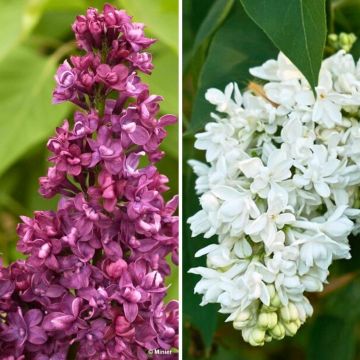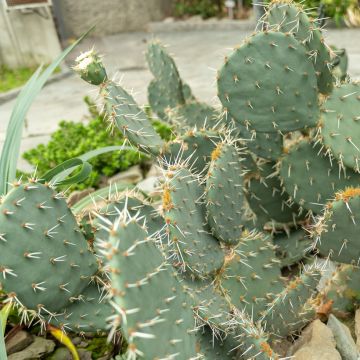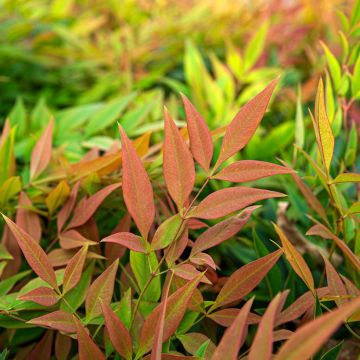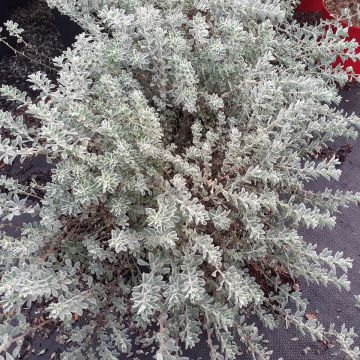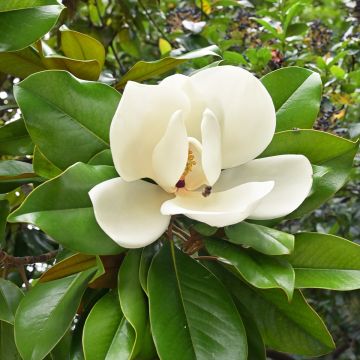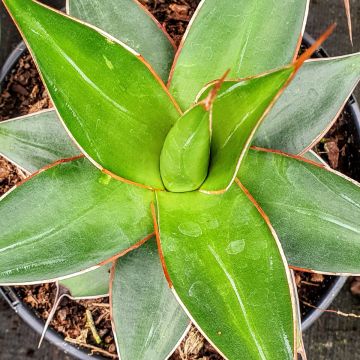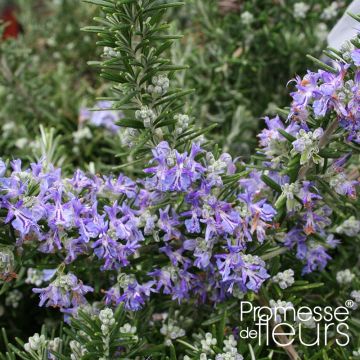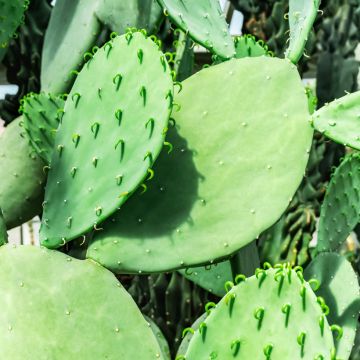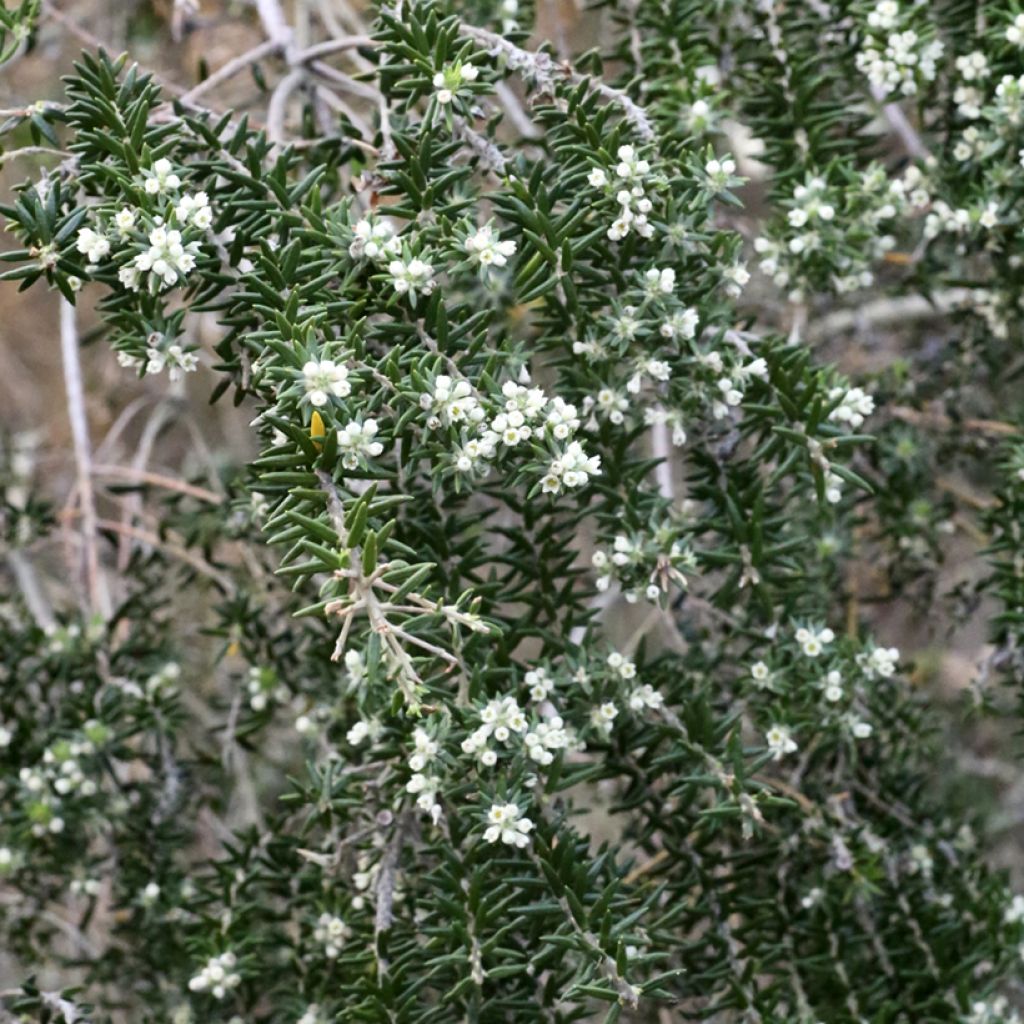

Phylica ericoides
Phylica ericoides
Phylica ericoides
This item cannot be shipped to the selected country
Delivery charge from €5.90
More information
Schedule delivery date,
and select date in basket
This plant carries a 24 months recovery warranty
More information
We guarantee the quality of our plants for a full growing cycle, and will replace at our expense any plant that fails to recover under normal climatic and planting conditions.
From €5.90 for pickup delivery and €6.90 for home delivery
Express home delivery from €8.90.
Does this plant fit my garden?
Set up your Plantfit profile →
Description
Phylica ericoides, sometimes called Cape heather, is an evergreen bush appreciated for its dense foliage and long autumn and winter flowering period, white and pleasantly scented. Originating from South Africa, this plant has its place in dry gardens and rockeries, but also by the sea. However, its frost resistance is limited: in cold regions, this Phylica should be grown in a pot to overwinter it like a citrus plant.
Belonging to the Rhamnaceae family, Phylica ericoides is native to the coastal regions of South Africa, particularly the fynbos and renosterveld areas, two regions specific to the Cape provinces. This species thrives on sandy, well-drained soils. The climate in its native lands is of a Mediterranean type with well-defined characteristics: a dry and hot summer and a mild and humid winter.
Phylica ericoides is a bushy and compact plant reaching a height of 60 cm to 1 m, with a similar spread. Its growth is moderately fast. Its slender branches are lightly covered with greyish hairs. The alternate, simple leaves are linear to lanceolate and measure between 5 and 8 mm long. They are bright green on top, with a whitish underside. The flowering from October to March-April consists of small, fragrant white flowers clustered in dense heads at the tops of the stems. These flowers emit a sweet scent, attracting pollinators. The fruits are small, hairy capsules containing fine seeds.
Phylica ericoides is an ideal plant for dry, Mediterranean, or coastal gardens, where it provides a light and natural structure. This plant fits well in sunny beds and rockeries. It can be paired with other Mediterranean plants preferring acidic and poor soil like Eriostemon or Christmas heather (Erica canaliculata). Erica carnea (winter heathers) will extend the winter flowering period in a natural and wild setting. And for summer, plant agapanthus in your bed for an interesting height. These plants combine drought resistance with Mediterranean aesthetics.
Report an error about the product description
Plant habit
Flowering
Foliage
Botanical data
Phylica
ericoides
Rhamnaceae
South Africa
Other Shrubs A to Z
Planting and care
For your Phylica ericoides, choose a location in full sun, well sheltered from cold winds. This variety prefers well-drained, sandy or rocky soils, and tolerates poor soils. However, it does not tolerate limestone. Once established, it withstands drought well, but regular watering in the first year will promote root growth. It can tolerate temperatures down to -5/-7°C at the most, but it is recommended to protect it in case of prolonged frost. Light pruning after flowering can help maintain a compact habit and promote abundant flowering the following year.
Pot cultivation in cold regions.
Choose a wide and deep container of at least 40 cm in diameter, with drainage holes. Use a well-draining substrate, consisting of a mix of multi-purpose compost, coarse sand, and non-limestone garden soil in equal parts. Add a layer of clay pebbles or gravel at the bottom of the pot to prevent water stagnation. Place the pot in full sun, sheltered from cold winds. Water moderately in summer when the surface of the substrate is dry, and reduce watering in winter to prevent root rot. Apply fertiliser for Mediterranean plants twice a year, in spring and autumn, to promote flowering and maintain dense foliage. Prune lightly after flowering to maintain a compact habit.
In winter, bring the pot into a bright porch or a very lightly heated room. Pot cultivation allows you to enjoy this bush even in regions with harsh winters.
Planting period
Intended location
Care
This item has not been reviewed yet - be the first to leave a review about it.
Evergreen shrubs
Haven't found what you were looking for?
Hardiness is the lowest winter temperature a plant can endure without suffering serious damage or even dying. However, hardiness is affected by location (a sheltered area, such as a patio), protection (winter cover) and soil type (hardiness is improved by well-drained soil).

Photo Sharing Terms & Conditions
In order to encourage gardeners to interact and share their experiences, Promesse de fleurs offers various media enabling content to be uploaded onto its Site - in particular via the ‘Photo sharing’ module.
The User agrees to refrain from:
- Posting any content that is illegal, prejudicial, insulting, racist, inciteful to hatred, revisionist, contrary to public decency, that infringes on privacy or on the privacy rights of third parties, in particular the publicity rights of persons and goods, intellectual property rights, or the right to privacy.
- Submitting content on behalf of a third party;
- Impersonate the identity of a third party and/or publish any personal information about a third party;
In general, the User undertakes to refrain from any unethical behaviour.
All Content (in particular text, comments, files, images, photos, videos, creative works, etc.), which may be subject to property or intellectual property rights, image or other private rights, shall remain the property of the User, subject to the limited rights granted by the terms of the licence granted by Promesse de fleurs as stated below. Users are at liberty to publish or not to publish such Content on the Site, notably via the ‘Photo Sharing’ facility, and accept that this Content shall be made public and freely accessible, notably on the Internet.
Users further acknowledge, undertake to have ,and guarantee that they hold all necessary rights and permissions to publish such material on the Site, in particular with regard to the legislation in force pertaining to any privacy, property, intellectual property, image, or contractual rights, or rights of any other nature. By publishing such Content on the Site, Users acknowledge accepting full liability as publishers of the Content within the meaning of the law, and grant Promesse de fleurs, free of charge, an inclusive, worldwide licence for the said Content for the entire duration of its publication, including all reproduction, representation, up/downloading, displaying, performing, transmission, and storage rights.
Users also grant permission for their name to be linked to the Content and accept that this link may not always be made available.
By engaging in posting material, Users consent to their Content becoming automatically accessible on the Internet, in particular on other sites and/or blogs and/or web pages of the Promesse de fleurs site, including in particular social pages and the Promesse de fleurs catalogue.
Users may secure the removal of entrusted content free of charge by issuing a simple request via our contact form.
The flowering period indicated on our website applies to countries and regions located in USDA zone 8 (France, the United Kingdom, Ireland, the Netherlands, etc.)
It will vary according to where you live:
- In zones 9 to 10 (Italy, Spain, Greece, etc.), flowering will occur about 2 to 4 weeks earlier.
- In zones 6 to 7 (Germany, Poland, Slovenia, and lower mountainous regions), flowering will be delayed by 2 to 3 weeks.
- In zone 5 (Central Europe, Scandinavia), blooming will be delayed by 3 to 5 weeks.
In temperate climates, pruning of spring-flowering shrubs (forsythia, spireas, etc.) should be done just after flowering.
Pruning of summer-flowering shrubs (Indian Lilac, Perovskia, etc.) can be done in winter or spring.
In cold regions as well as with frost-sensitive plants, avoid pruning too early when severe frosts may still occur.
The planting period indicated on our website applies to countries and regions located in USDA zone 8 (France, United Kingdom, Ireland, Netherlands).
It will vary according to where you live:
- In Mediterranean zones (Marseille, Madrid, Milan, etc.), autumn and winter are the best planting periods.
- In continental zones (Strasbourg, Munich, Vienna, etc.), delay planting by 2 to 3 weeks in spring and bring it forward by 2 to 4 weeks in autumn.
- In mountainous regions (the Alps, Pyrenees, Carpathians, etc.), it is best to plant in late spring (May-June) or late summer (August-September).
The harvesting period indicated on our website applies to countries and regions in USDA zone 8 (France, England, Ireland, the Netherlands).
In colder areas (Scandinavia, Poland, Austria...) fruit and vegetable harvests are likely to be delayed by 3-4 weeks.
In warmer areas (Italy, Spain, Greece, etc.), harvesting will probably take place earlier, depending on weather conditions.
The sowing periods indicated on our website apply to countries and regions within USDA Zone 8 (France, UK, Ireland, Netherlands).
In colder areas (Scandinavia, Poland, Austria...), delay any outdoor sowing by 3-4 weeks, or sow under glass.
In warmer climes (Italy, Spain, Greece, etc.), bring outdoor sowing forward by a few weeks.

































